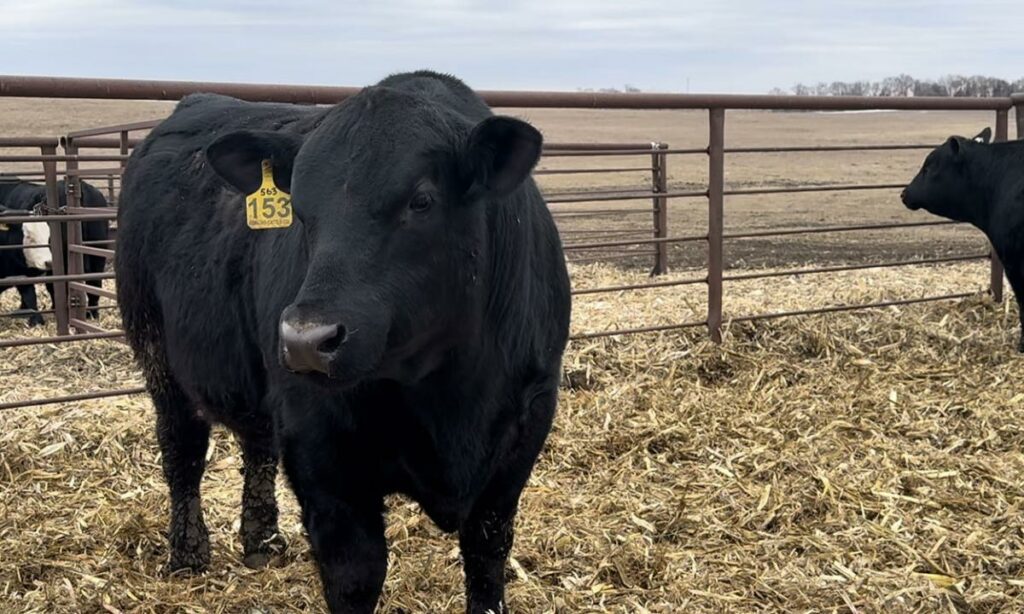Introduction
Bull sale season brings producers and cattle enthusiasts together across the nation at various sales rain or shine. While everyone has their own set of criteria to follow, they all are looking for their perfect bull. When the gavel strikes, and ownership is transferred, excitement and happiness is soon to follow for the respective buyer. The bull may stay at the breeder’s operation for further development with a later pick up date or it may be able to be trailered up that same day to come home. No matter when the bull makes it to their new home and herd, being prepared to give this new herd member the proper welcome is imperative for future success.
Get prepared
It is always best to be prepared rather than playing catch up for anything, and the addition of a new herd bull is no exception. Is there a proper housing area available? Is there time and space available for quarantine? What is the nutrition plan? Is the waterer working? Is a vet check necessary? This is a short compilation of questions producers should ask themselves as they prepare to bring this new animal into their herd.
Bulls require space to exercise with solid fence lines. Ensuring fences are in good repair with no holes, broken posts, or damaged lines will reduce incidences of animals that get out. Decide where the new bull will be housed and walk the fence line to ensure there are little to no repairs needed. Examine feed bunks and water fountains for damage and ensure water fountains are working correctly. If the waterer is dirty, be sure to clean it shortly before bringing the bull home. Cattle prefer fresh and clean water, and a clean water source will ensure the animal will stay hydrated during this move to a new environment.
Many bulls come with a health guarantee or certificate from the seller or consignor, but it is good practice to have your veterinarian conduct a full health exam on any new animal being introduced to the herd. This can help spot problems early before they develop into larger concerns. Also, this allows you to gain familiarity with your new bull to spot behavioral changes in the future. If there is a health concern found during this exam, treatment can be received immediately.
All new animals entering a herd should experience a quarantine time of a minimum of 30 days, but ideally up to 60 days. This allows any illnesses not visually present at first arrival to present themselves and any shedding of pathogens to cease. Additionally, during this time there should be no contact with the existing herd through nose-to-nose contact or through manure, feed, or water.
Acclimation and Nutritional Changes
Integrating a new herd bull into a preexisting group of bulls can be a daunting task. Bulls form social hierarchies, and adding a new member to the mix disrupts the previously formed rankings. “Breakdown” sometimes occurs before bulls are turned out to pasture, and this can be due to fighting. New bulls should not be turned into a pen of established bulls, they should be allowed time to acclimate to minimize risk of injury. Extra caution should be taken when combining yearling and mature bulls. Yearlings can become overpowered by mature bulls, and injuries can occur. If possible, run bulls alongside each other with secure fencing for a period of time before running them together. When joined, fighting may still occur, but it should be less severe. If it is not possible to run bulls alongside each other, join them together in a large field or pen with ample space to escape from fights and to keep distance among themselves.
As buyers, you do not want to see bulls lose condition rapidly after being turned out on pasture. This loss of condition can negatively impact bull fertility and breeding performance. Providing a nutrition adjustment can help prepare these young bulls for pasture turn out. Bulls are typically developed on an energy-dense diet to achieve a high rate of gain and greater growth performance. Gradually adjusting bulls back to a forage-based diet before turning out to pasture will allow bulls to better maintain condition.
This gradual change in nutrition is important for sperm development, or spermatogenesis. This process occurs over a 60-day period, so sperm produced during a nutritional imbalance can impact breeding success 2 months later. A goal average daily gain for yearling bulls prior to breeding should be 1.5 to 2 pounds per day with a diet containing 10 to 11% crude protein. This allows these animals to meet requirements for growth and reproduction. Given this, bulls should ideally have a body condition score (abbreviated as BCS) of 6 prior to breeding season. Naturally, bulls can lose 100 to 200 pounds during breeding season, so giving them some extra condition allows bulls to lose some weight without negatively impacting sperm quality.
SOURCE/PHOTO: Professional portrait of Madison Kovarna Madison Kovarna, SDSU Extension Beef Nutrition Field Specialist. Additional Authors: Sydney Vanderhoff









